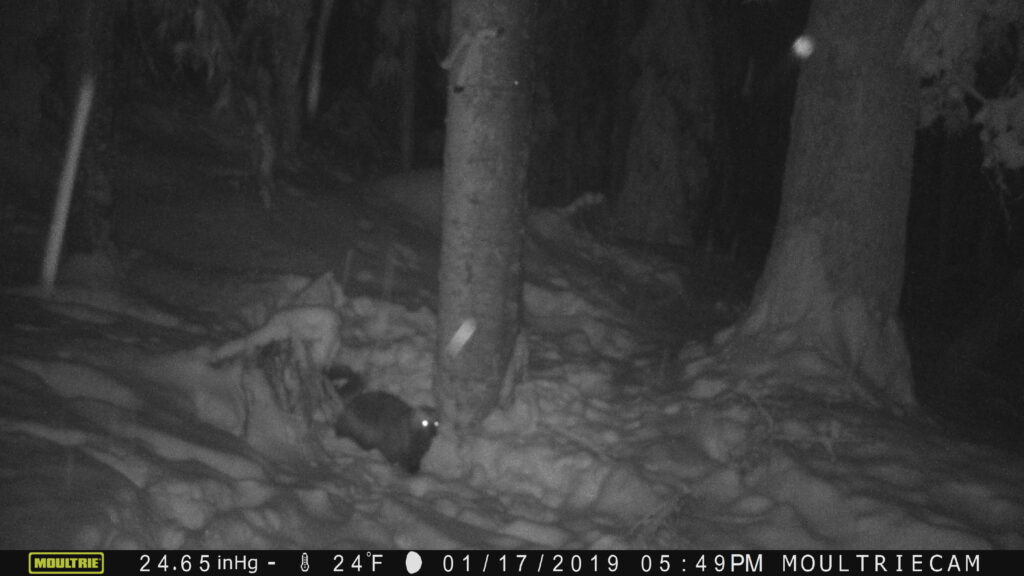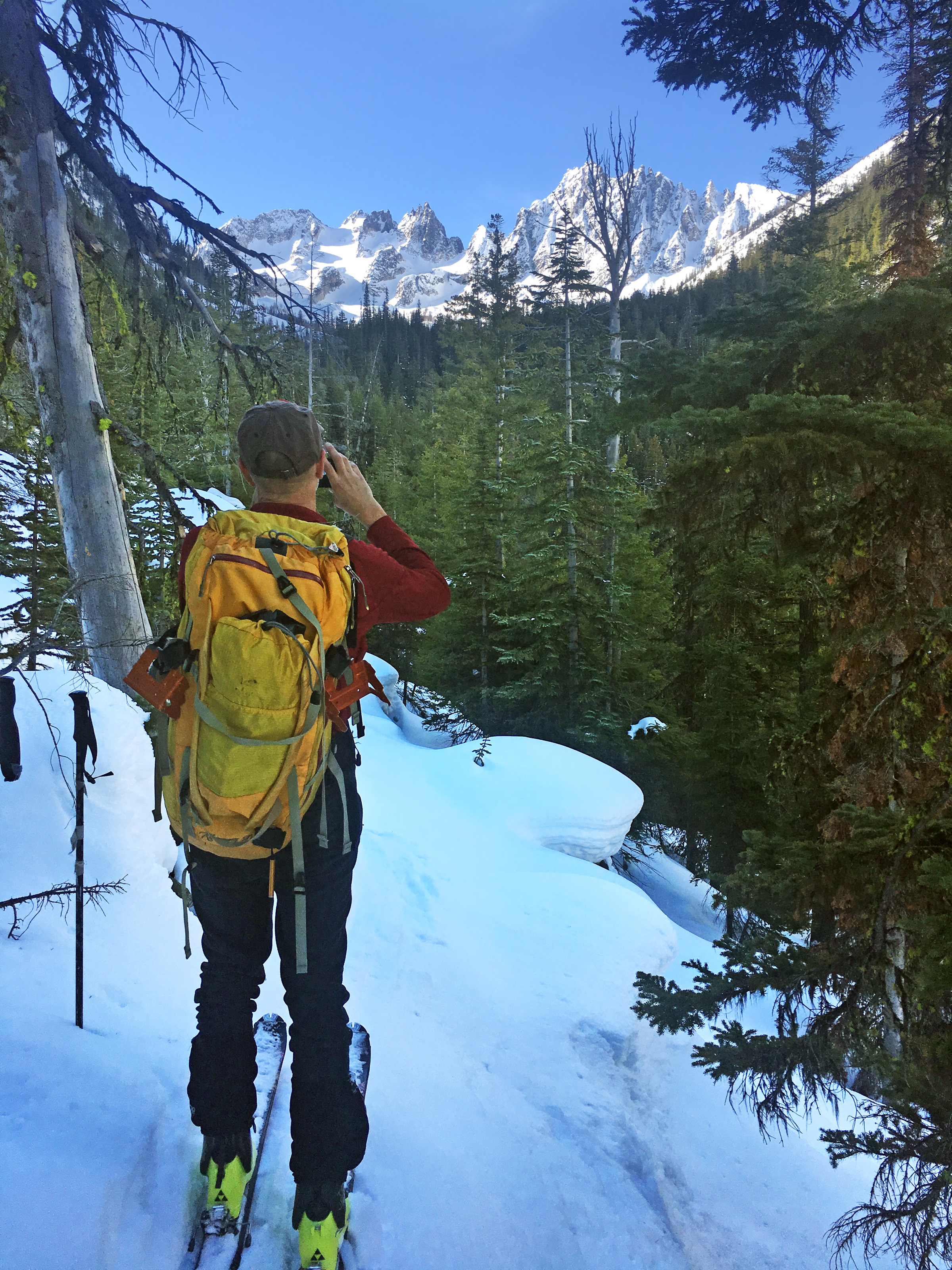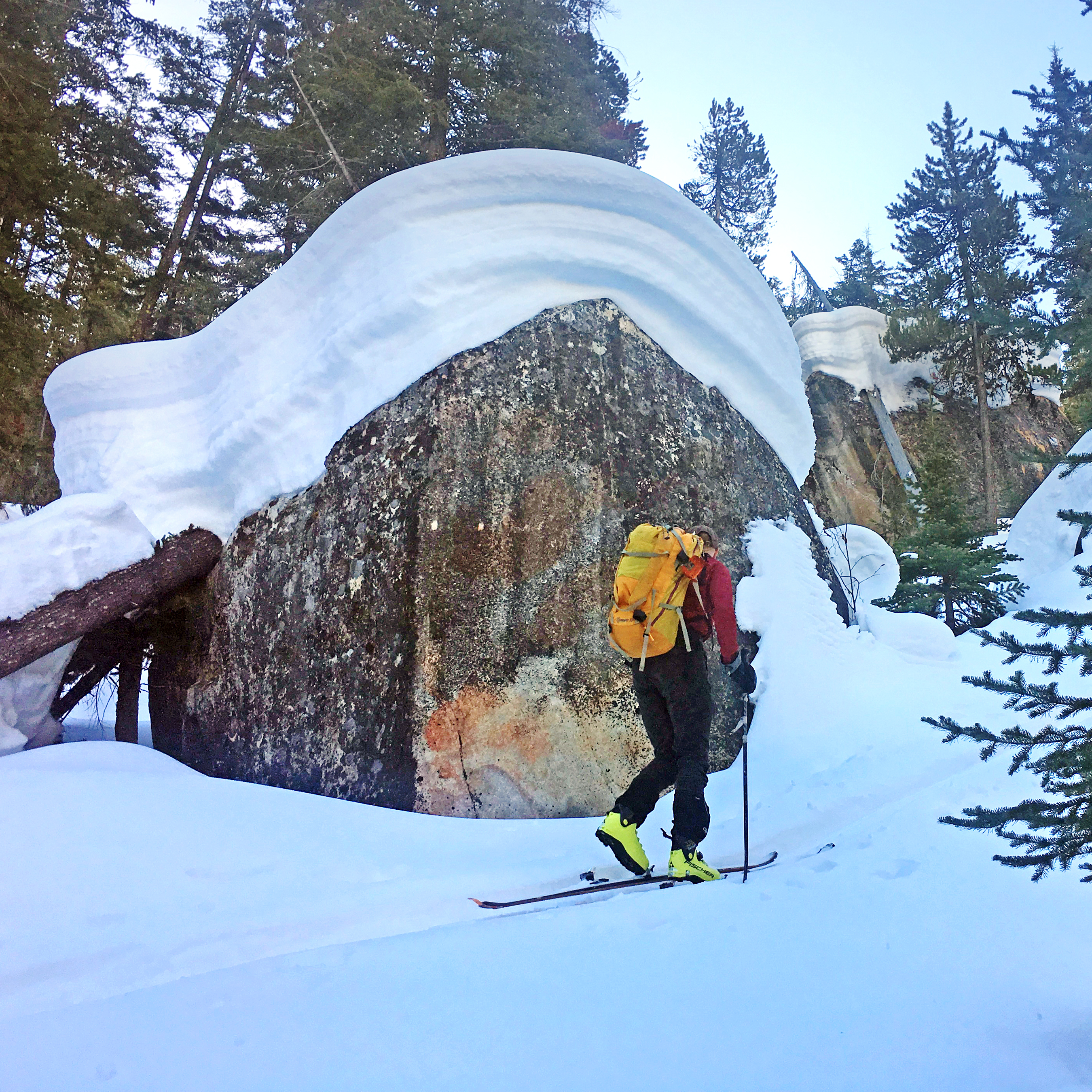Story by Jack McLeod and Peter Loft. Gulo photos from CWP camera stations they installed and managed for us.
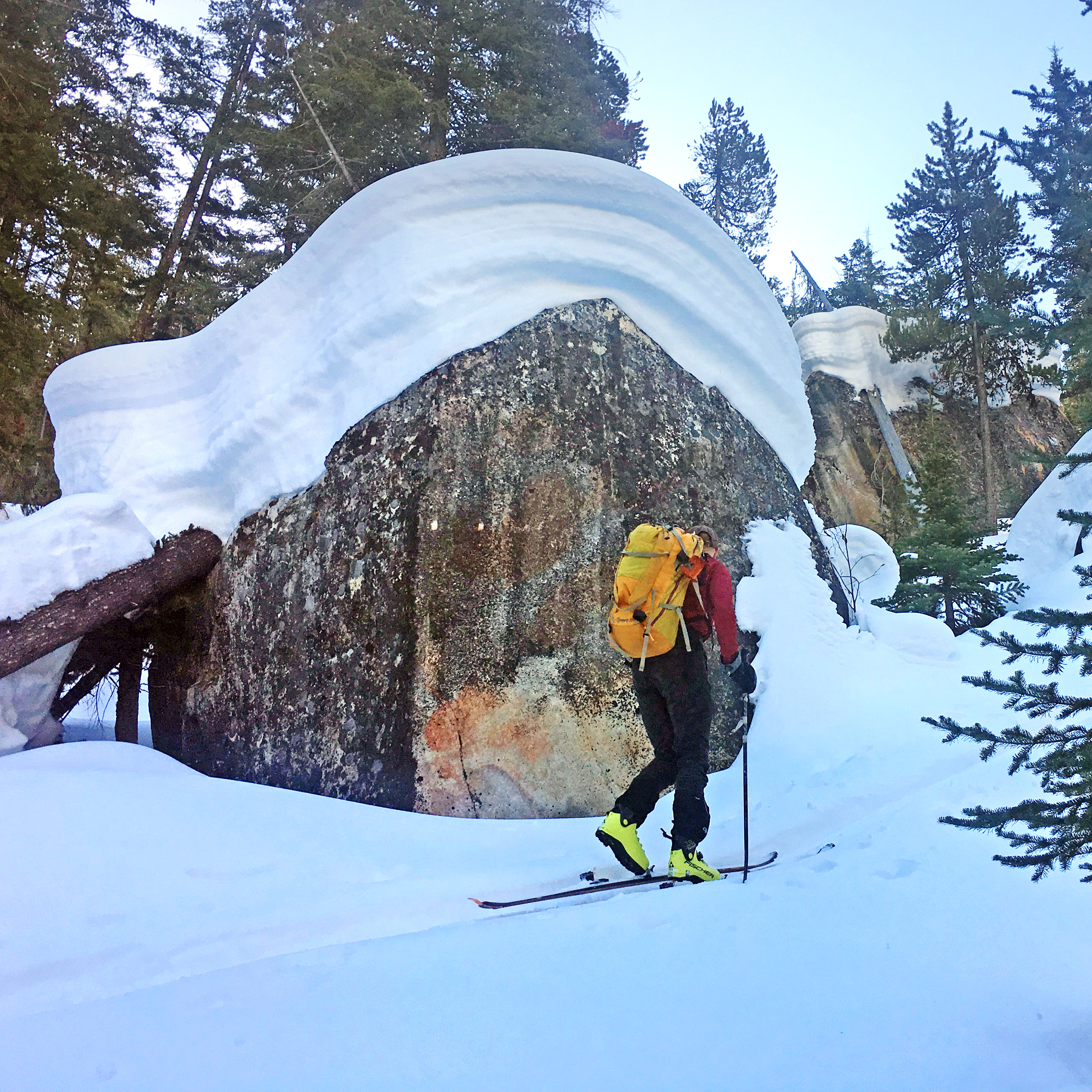
Note: Jack McLeod and Peter Loft have been volunteering with CWP for 4 years now, and for Conservation Northwest’s community science program for many years prior to this.
“The fear is that in my grandkids’ lifetime, these animals may disappear from our backyard, and I do not want to be the old man who had to confess ‘I didn’t do a damn thing about it.’” This recent conversation is on our minds as we ski up the highway with packs full of camera gear.
It’s January 2022. We first climbed Silver Star Peak, the most prominent summit in this part of the range, decades ago but this trip has a unique purpose. We’re volunteering with Conservation Northwest and the Cascades Wolverine Project trying to capture images of Gulo gulo, the elusive wolverine.
Our plan was to set cameras up at high elevation in early December but the road closed 3 days before our target date. It’s now late January, the trailhead is almost 7 miles up the closed road, we don’t have a snowmobile, packs will be heavy, snow conditions in the woods will be crusty and the forecast calls for stormy weather. So naturally our planning conversation ends with “Let’s go! A nice long road ski in sh– conditions to get to the trailhead will build character!”
This is the joy of citizen science. Something arduous, that you might not do otherwise, turns out be a lot of fun. It’s the magic of being outdoors with good friends and contributing to important causes. Wolverines are an indicator species for ecosystem health. Exterminated from Washington state in the 1900’s, a few have migrated south from British Columbia. The small populations that now exist are threatened by habitat fragmentation and loss of deep snow for denning sites. Finding out how these animals respond to the relentless march of climate change and the creeping effects of more people in the back country will help policy makers make sound management decisions based on science instead of ideology or politics.
As citizen scientists, ordinary people collect and contribute data to research projects on everything from measuring glacier volume to discovering exoplanets. In our case, we’ve spent the last few years setting up and monitoring wildlife cameras in remote North Cascade locations. It’s always exciting to come back and check the camera to see who lives in these areas. Last summer one subalpine camera revealed an intricate ecosystem with wolverine, wolf, moose and a variety of common and not commonly seen animals from marmot to flying squirrel. The Silver Star station is one individual location but over the years, along with other volunteers and locations, these cameras provide invaluable and irreplaceable data.
For our January morning trip, there will be a long road slog and difficult crusty snow in the woods so we choose different strategies, a multi-faceted plan of attack. Between us, we have one pair of decades-old light-weight cross-country skis, one pair of modern metal-edged alpine touring (“AT”) skis and one pair of snowshoes.
The road approach is a long but refreshing warmup and both types of skis work well. We attach climbing skins for the steep valley ascent. The AT skins are fat for maximum grip. An old pair of telemark ski skins work well on the skinny cross-country skis.
Leaving the highway corridor and heading up the mountainside is serene as always, with one profound difference. Last summer’s 56,000 acre Cedar Creek fire burned large patches of forest. Naked trees open our lines of site. Giant boulders, cliffy slopes and dips in the terrain are more visible. And the landscape is desaturated. Greens are replaced with shades of rust. The remaining black trees create grey stick shadows carpeting the winter base like zebra stripes.
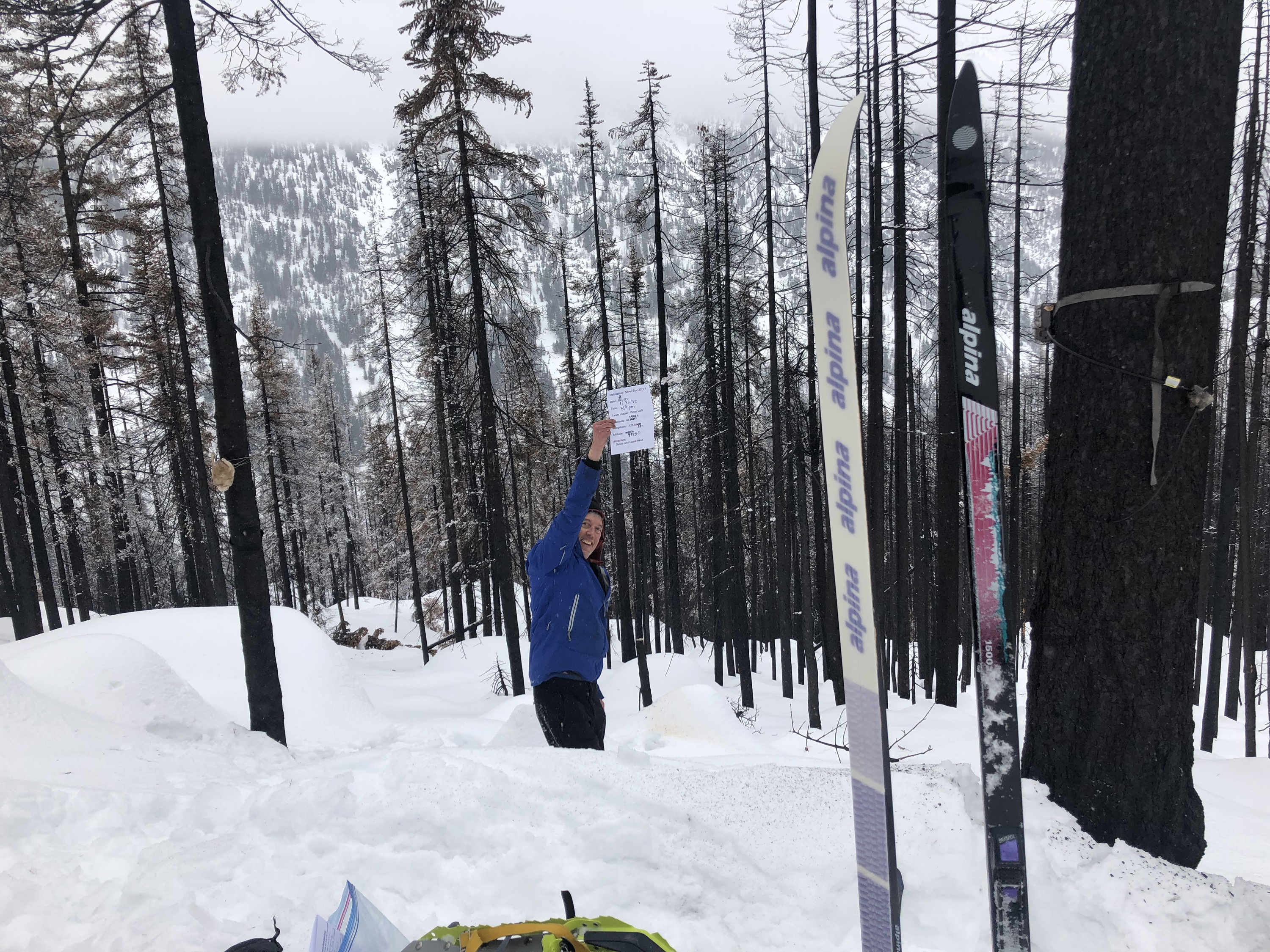
With the newly opened landscape, we can better imagine where a wolverine might travel. We explore new terrain and find a camera location away from the narrow valley corridor where most skiers and hikers travel. On the edge of stripped trees, across an open avalanche path with easy access to the high alpine, we think the site is perfect. We hope wolverines feel the same way!
With cameras set, we navigate back down the audibly crusty slopes. Snowshoes replace skinny skis. Fat metal-edged skis churn and shatter through the crust.
The road trip is 6+ miles of mostly downhill glide, complementing the satisfaction of setting another camera station with hopes of once again capturing Gulo gulo.
